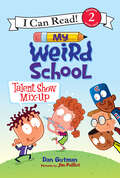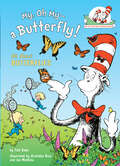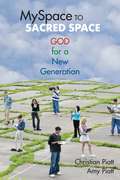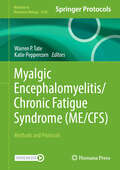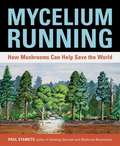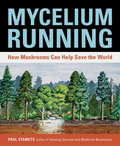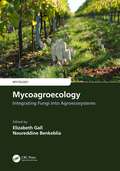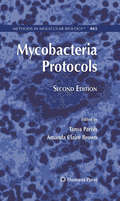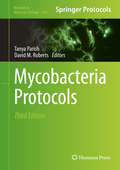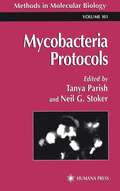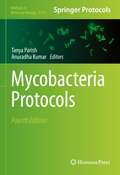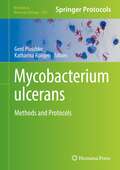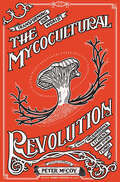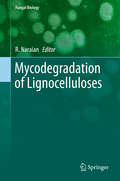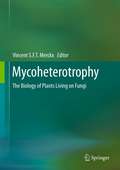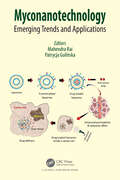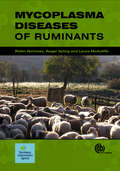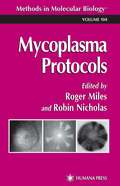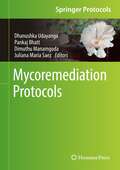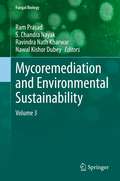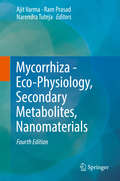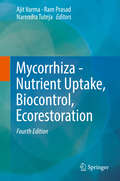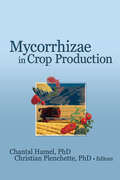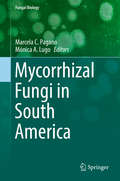- Table View
- List View
My Weird School: Talent Show Mix-up (I Can Read Level 2)
by Dan GutmanA new series of Level Two I Can Read titles based on Dan Gutman’s My Weird School series, which has sold more than 12 million books!Mr. Cooper’s class is having a talent show. But A.J. has a problem—he doesn’t have a talent! What will he do when the big day comes? Join A.J. and the gang from Ella Mentry School as they show young readers why they attend the weirdest—and most fun!—school around.My Weird School: Talent Show Mix-Up is a Level Two I Can Read book, geared for kids who read on their own but still need a little help.
My, Oh My-A Butterfly! All About Butterflies: All About Butterflies (The Cat in the Hat's Learning Library)
by Tish RabeLaugh and learn with fun facts about caterpillars, moths, different kinds of butterflies, and more—all told in Dr. Seuss&’s beloved rhyming style and starring the Cat in the Hat! &“Butterflies are surprising and beautiful things as they soar through the air on their bright-colored wings.&” The Cat in the Hat&’s Learning Library series combines beloved characters, engaging rhymes, and Seussian illustrations to introduce children to non-fiction topics from the real world! Take flight with the Cat in the Hat and discover: how butterflies see thousands of images at oncedrink nectar from flowers using tubes (like straws!)lay eggs as small as the head of a pinand much more!Perfect for story time and for the youngest readers, My, Oh My—A Butterfly! All About Butterflies also includes an index, glossary, and suggestions for further learning. Look for more books in the Cat in the Hat&’s Learning Library series!High? Low? Where Did It Go? All About Animal CamouflageIs a Camel a Mammal? All About MammalsThe 100 Hats of the Cat in the Hat: A Celebration of the 100th Day of SchoolA Great Day for Pup: All About Wild BabiesWould You Rather Be a Pollywog? All About Pond LifeHappy Pi Day to You! All About Measuring CirclesI Can Name 50 Trees Today! All About TreesFine Feathered Friends: All About BirdsOh Say Can You Seed? All About Flowering PlantsInside Your Outside! All About the Human BodyIce is Nice! All About the North and South Poles
MySpace to Sacred Space: God for a New Generation
by Christian Piatt Amy PiattRecently, MySpace.com has become one of the most-visited Web sites in the world. With millions of young users, this one site has made a giant impact on youth pop culture in just a matter of a few years. At the same time, themes of spirituality pervade our lives. From television to film and popular literature, theology is a burgeoning enterprise in popular culture. In contrast, most churches and denominations are built on eighteenth-century principles, and are fighting to remain relevant to young members. The collective fear is that if the church doesn't adapt to this new generation, they will be left behind forever. Christian and Amy Piatt believe church leaders have a responsibility to stay tuned in to the values and vernacular employed by the younger generations. MySpace to Sacred Space combines first-hand accounts with case studies from people both within and outside the church. Far from tolling the death knell for the established church, MySpace to Sacred Space is an affirming, hopeful look at the ever-growing need for what the Christian faith can offer the world. Much of the relevance for the twenty-first century church can be found in our oldest traditions. By reconnecting with our past and by setting time aside for God and for one another, we have an opportunity to create sacred space and time wherever we are.
Myalgic Encephalomyelitis/Chronic Fatigue Syndrome: Methods and Protocols (Methods in Molecular Biology #2920)
by Warren P. Tate Katie PeppercornThis detailed volume explores the condition of Myalgic Encephalomyelitis/Chronic Fatigue Syndrome (ME/CFS) and the recent techniques used to investigate the dysfunctional pathophysiology in patients. Beginning with a section on diagnosis, the book continues by covering the chronic cellular and molecular changes in the peripheral immune system that affect their molecular homeostasis, metabolic changes, as well as imaging technologies to understand the brain&’s dysfunction in aberrantly regulating body physiology in ME/CFS. Written for the highly successful Methods in Molecular Biology series, chapters include introductions to their respective topics, lists of the necessary materials and reagents, step-by-step and readily reproducible laboratory protocols, and tips on troubleshooting and avoiding known pitfalls. Authoritative and practical, Myalgic Encephalomyelitis/Chronic Fatigue Syndrome (ME/CFS): Methods and Protocols serves as an ideal guide for clinicians and researchers working to better understand post-viral/stressor conditions in order to improve the lives of those affected with ME/CFS and, most recently, long COVID.
Mycelium Running
by Paul StamentsMycelium Runningis a manual for the mycological rescue of the planet. That's right: growing moremushroomsmay be the best thing we can do to save the environment, and in this groundbreaking text from mushroom expert Paul Stamets, you'll find out how. The basic science goes like this: Microscopic cells called "mycelium"--the fruit of which are mushrooms--recycle carbon, nitrogen, and other essential elements as they break down plant and animal debris in the creation of rich new soil. What Stamets has discovered is that we can capitalize on mycelium's digestive power and target it to decompose toxic wastes and pollutants (mycoremediation), catch and reduce silt from streambeds and pathogens from agricultural watersheds (mycofiltration), control insect populations (mycopesticides), and generally enhance the health of our forests and gardens (mycoforestry and myco-gardening). In this comprehensive guide, you'll find chapters detailing each of these four exciting branches of what Stamets has coined "mycorestoration," as well as chapters on the medicinal and nutritional properties of mushrooms, inoculation methods, log and stump culture, and species selection for various environmental purposes. Heavily referenced and beautifully illustrated, this book is destined to be a classic reference for bemushroomed generations to come.
Mycelium Running: How Mushrooms Can Help Save the World
by Paul StametsMycelium Running is a manual for the mycological rescue of the planet. That’s right: growing more mushrooms may be the best thing we can do to save the environment, and in this groundbreaking text from mushroom expert Paul Stamets, you’ll find out how. The basic science goes like this: Microscopic cells called “mycelium”--the fruit of which are mushrooms--recycle carbon, nitrogen, and other essential elements as they break down plant and animal debris in the creation of rich new soil. What Stamets has discovered is that we can capitalize on mycelium’s digestive power and target it to decompose toxic wastes and pollutants (mycoremediation), catch and reduce silt from streambeds and pathogens from agricultural watersheds (mycofiltration), control insect populations (mycopesticides), and generally enhance the health of our forests and gardens (mycoforestry and myco-gardening). In this comprehensive guide, you’ll find chapters detailing each of these four exciting branches of what Stamets has coined “mycorestoration,” as well as chapters on the medicinal and nutritional properties of mushrooms, inoculation methods, log and stump culture, and species selection for various environmental purposes. Heavily referenced and beautifully illustrated, this book is destined to be a classic reference for bemushroomed generations to come.From the Trade Paperback edition.
Mycoagroecology: Integrating Fungi into Agroecosystems (Mycology #33)
by Noureddine Benkeblia Elizabeth “Izzie” GallDuring the 20th century, agriculture underwent many unsustainable changes for the sake of greater food production. Today, the effects of climate change are becoming ever more apparent and the global population continues to grow, placing additional pressures on agricultural systems. For this reason, it is vital to turn international agriculture towards a sustainable future capable of providing healthy, bountiful foods by using methods that preserve and reconstruct the balance of natural ecosystems. Fungi are an underappreciated, underutilized group of organisms with massive potential to aid in the production of healthy food and other products while also increasing the sustainability of agricultural systems. Mycoagroecology: Integrating Fungi into Agroecosystems lays the foundations for integrated fungal-agricultural understanding and management, the proposed practice of “mycoagroecology”. Suitable for students and professionals of multiple disciplines, this text includes nine introductory chapters that create a firm foundation in ecosystem functioning, evolution and population dynamics, fungal biology, principles of crop breeding and pest management, basic economics of agriculture, and the history of agricultural development during the 20th century. The latter half of the text is application-oriented, integrating the knowledge from the introductory chapters to help readers understand more deeply the various roles of fungi in natural and agricultural systems: PARTNERS: This text explores known benefits of wild plant-fungal mutualisms, and how to foster and maintain these relationships in a productive agricultural setting. PESTS AND PEST CONTROL AGENTS: This text acknowledges the historical and continuing role of agriculturally significant fungal pathogens, surveying modern chemical, biotechnological, and cultural methods of controlling them and other pests. However, this book also emphasizes the strong potential of beneficial fungi to biologically control fungal, insect, and other pests. PRODUCTS: This text covers not just isolated production of mushrooms on specialized farms but also the potential for co-cropping mushrooms in existing plant-based farms, making farm systems more self-sustaining while adding valuable and nutritious new products. An extensive chapter is also devoted to the many historical and forward-facing uses of fungi in food preservation and processing.
Mycobacteria Protocols
by Tanya Parish Amanda Claire BrownDue to the rising threat of tuberculosis and other mycobacterial infections, methods to study the biology of the mycobacteria and to improve diagnostic, therapeutic and preventative reagents are still very much in need. Mycobacteria Protocols, Second Edition updates and refines the methods of the well-received first edition while adding newly developed methods culled from the most cutting-edge research in the field. Ranging from the basics of sub-cellular fractionation to advanced methods using specialized growth conditions and whole genome, transcriptome and proteome analysis, the chapters conform to the Methods in Molecular BiologyTM series format, providing step-by-step laboratory protocols, lists of necessary materials and reagents, and tips on troubleshooting and avoiding known pitfalls. Comprehensive and up-to-date, Mycobacteria Protocols, Second Edition is the perfect resource to promote and stimulate further research into these intriguing, important and most fractious of bacteria.
Mycobacteria Protocols
by Tanya Parish David M. RobertsDue to the rising threat of tuberculosis and other mycobacterial infections, methods to study the biology of the mycobacteria and to improve diagnostic, therapeutic and preventative reagents are still very much in need. Mycobacteria Protocols, Second Edition updates and refines the methods of the well-received first edition while adding newly developed methods culled from the most cutting-edge research in the field. Ranging from the basics of sub-cellular fractionation to advanced methods using specialized growth conditions and whole genome, transcriptome and proteome analysis, the chapters conform to the Methods in Molecular Biology(tm) series format, providing step-by-step laboratory protocols, lists of necessary materials and reagents, and tips on troubleshooting and avoiding known pitfalls. Comprehensive and up-to-date, Mycobacteria Protocols, Second Edition is the perfect resource to promote and stimulate further research into these intriguing, important and most fractious of bacteria.
Mycobacteria Protocols
by Tanya ParishLaboratory experts present cutting-edge molecular biology techniques for studying the mycobacteria, a medically significant group of organisms responsible for both human and animal disease, including tuberculosis and leprosy. The methods range from basic culture techniques, cell fractionation, and nucleic acid purification to more advanced protocols for the introduction of cloned DNA into mycobacteria, the use of reporter genes, and the expression of foreign genes. There are also important techniques for mycobacteriophages, genome analysis, chemical and transposon mutagenesis, gene replacement, and analysis of gene expression, as well as such clinically useful techniques as antibiotic susceptibility testing, speciation, and RFLP analysis.
Mycobacteria Protocols (Methods in Molecular Biology #2314)
by Tanya Parish Anuradha KumarThis fully updated edition explores the latest techniques to study the challenging, and at times dangerous, genus of bacteria known as mycobacteria with basic methods that are still required for mycobacteriology along with the newer or improved methods that have been developed. The volume features chapters on the basics of DNA isolation, protein isolation, and lipid isolation, as well as more sophisticated techniques for isolation of ribosomes, and continues with sections involving analyzing subcellular fractions, culture methods, sequencing technology, in vitro models, molecular methods, as well as drug discovery applications. Written for the highly successful Methods in Molecular Biology series, chapters include introductions to their respective topics, lists of the necessary materials and reagents, step-by-step, readily reproducible laboratory protocols, and tips on troubleshooting and avoiding known pitfalls. Authoritative and up-to-date, Mycobacteria Protocols, Fourth Edition serves as an ideal guide for those starting out with their mycobacteria research and also for those who have worked with it for decades.
Mycobacterium Tuberculosis: Molecular Infection Biology, Pathogenesis, Diagnostics and New Interventions
by Seyed Ehtesham Hasnain Nasreen Z. Ehtesham Sonam GroverThis book reviews recent advances in the molecular and infection biology, pathology, and molecular epidemiology of Mycobacterium tuberculosis, as well as the identification and validation of novel molecular drug targets for the treatment of this mycobacterial disease.Despite being completely curable, tuberculosis is still one of the leading global causes of death. M. tuberculosis, the causative organism – one of the smartest pathogens known – adopts highly intelligent strategies for survival and pathogenesis. Presenting a wealth of information on the molecular infection biology of M. tuberculosis, as well as nontuberculous mycobacteria (NTM), the book provides an overview of the functional role of the PE/PPE group of proteins, which is exclusive to the genus Mycobacteria, of host-pathogen interactions, and virulence. It also explores the pathogenesis of the infection, pathology, epidemiology, and diagnosis of NTM. Finally it discusses current and novel approaches in vaccine development against tuberculosis, including the role of nanotechnology. With state-of-the-art contributions from experts in the respective domains, this book is an informative resource for practitioners as well as medical postgraduate students and researchers.
Mycobacterium ulcerans: Methods and Protocols (Methods in Molecular Biology #2387)
by Gerd Pluschke Katharina RöltgenThis volume explores the latest techniques used to study Mycobacterium ulcerans, and more specifically M. ulcerans disease (Buruli ulcer). The chapters in this book are organized into three parts and cover methods for the detection of M. ulcerans and the analysis of host-pathogen interaction; the quantification and characterization of mycolactone, the macrolide toxin of M. ulcerans; and drug development against M. ulcerans. Written in the highly successful Methods in Molecular Biology series format, chapters include introductions to their respective topics, lists of the necessary materials and reagents, step-by-step, readily reproducible laboratory protocols, and tips on troubleshooting and avoiding known pitfalls. Authoritative and cutting-edge, Mycobacterium ulcerans: Methods and Protocols is a valuable resource that helps scientists advance their research on Buruli ulcer, which is still an under-researched field in infection biology.
Mycocultural Revolution, The: Transforming Our World with Mushrooms, Lichens, and Other Fungi
by Peter McCoyDiscover the glorious world of mushrooms, lichens, and micro fungi, as described by Peter McCoy, one of today&’s foremost experts in the field. Covering the essential information and skills for identifying, cultivating, and celebrating the uniqueness of fungi, this book enables anyone to quickly and easily engage in the art and science of mycology—the study of fungi. Mycology offers vast opportunities to enhance our lives, support our communities, and heal the environment. This first-of-its-kind introductory text is accessible for anyone just getting started in mycology, as well as for those seeking a fresh perspective on this important science.Learn general mycological facts, essential information and skills for identifying common mushroom types, foraging tips, delicious recipes, a growing guide, mycoremediation (using fungi to treat contaminated areas in our environment), mushroom-based crafts, and so much more!With a foreword by Robert Rogers, author of The Fungal Pharmacy.
Mycodegradation of Lignocelluloses (Fungal Biology)
by R. NaraianThis book provides a knowledge-based view to the dynamic capabilities in an organization. The author integrates two existing views on gaining competitive advantage: the Knowledge View which suggests that the capability of organizations to learn faster than competitors is the only source of competitiveness; and the Dynamic Capability View which speculates that a fi rm’s competitive advantage rests on it’s ability to adapt to changes in the business environment. Using the IT sector in India as a case study, this book provides and tests a new framework—Knowledge-Based Dynamic Capabilities—in the prediction of competitive advantage in organizations.
Mycoheterotrophy
by Vincent MerckxOver the course of evolution, several plant lineages have found ways to obtain water, minerals, and carbohydrates from fungi. Some plants are able exploit fungi to such an extent that they lose the need for photosynthesis. The ability of a plant to live on fungal carbon is known as mycoheterotrophy. This intriguing process has fascinated botanists for centuries, yet many aspects of mycoheterotrophy have remained elusive for a long time. Mycoheterotrophy: The Biology of Plants Living on Fungi explores the biology of mycoheterotrophs, offering general insights into their ecology, diversity, and evolution. Written by renowned experts in the field and bolstered with lavish illustrations and photographs, this volume provides a thematic overview of different aspects of mycoheterotrophy. Comprehensive and readily accessible, Mycoheterotrophy: The Biology of Plants Living on Fungi is a valuable resource for researchers and students who are interested in the process of mycoheterotrophy.
Myconanotechnology: Emerging Trends and Applications
by Mahendra Rai Patrycja GolińskaMyconanotechnology is a highly interdisciplinary science emerging at a fast pace and has garnered the attention of nanotechnologists, mycologists, biomedical experts, and agriculture scientists, among others. For the last decade, there has been tremendous progress in this field owing to its wider and more effective applications. In this book, the authors have attempted to discuss different evolving trends in medicine, food, agriculture, veterinary, environment, and textiles. Globally contributed by eminent authors and experts, the present book contains valuable chapters on the diverse aspects of Myconanotechnology and thus would be essential reading for academicians. This book will cater to the need of postgraduate and research students in fungal biology, microbiology, chemistry, nanotechnology, biotechnology, and pharmacology.
Mycoplasma Diseases of Ruminants
by Robin Nicholas Roger Ayling Laura McauliffeMycoplasmas are the smallest of free-living organisms and are intermediate between viruses and bacteria. Many species thrive as parasites in animal (including human) hosts. This book is based on proceedings of a conference held in Palermo, Italy. It reviews some of the most important mycoplasma diseases of sheep, goats and cattle including contagious bovine pleuropneumonia, contagious agalactia and calf pneumonia, which are listed by the OIE because of their economic implications.
Mycoplasma Protocols
by Robin A. Nicholas Roger J. MilesThis is a collection of cutting-edge mycoplasma methods for the detection, isolation, identification, characterization, and genetic manipulation of the pathogenic mycoplasmas. These step-by-step methods are crafted for successful reproducibility and include biochemical, genetic, and molecular techniques essential to understanding pathogenecity and adhesion to host cells. They also cover the detection of mycoplasmas in cell cultures, an important tool not only in viral diagnosis and research, but also in the production of vaccines and various biological products.
Mycoremediation Protocols (Springer Protocols Handbooks)
by Pankaj Bhatt Dhanushka Udayanga Dimuthu Manamgoda Juliana Maria SaezThis volume provides a wide range of aspects related to mycoremediation, which can be applied for both basic and advanced multidisciplinary research. Chapters guide readers through screening of fungi, Polyaromatic Hydrocarbons (PAHs), textile dyes, pesticides, bioreactors, molecular methods, redictive Mycology and Proteomics approaches to select fungi, elucidating biological mechanisms, and fungal laccase enzyme-based biosensors for the detection of environmental contaminants. Authoritative and cutting-edge, Mycoremediation Protocols aims to be a practical guide on the functional properties of poorly known applications of fungi in order to find solutions for increasing environmental problems.
Mycoremediation and Environmental Sustainability: Volume 3 (Fungal Biology)
by Ram Prasad S. Chandra Nayak Ravindra Nath Kharwar Nawal Kishor DubeyVolume 3 covers recent research with expanded coverage on this important area of remediation. Mycoremediation is the form of bioremediation in which fungi-based technology is used to decontaminate the environment. Fungi are among the primary saprotrophic organisms in an ecosystem, as they are efficient in the decomposition of organic matter. Wood-decay fungi, especially white rot, secretes extracellular enzymes and acids that break down lignin and cellulose. Fungi have been proven to be a very cost-effective and environmentally-friendly way for helping to remove a wide array of toxins from damaged environments or wastewater. These toxins include heavy metals, persistent organic pollutants, textile dyes, leather tanning industry chemicals and wastewater, petroleum fuels, polycyclic aromatic hydrocarbon, pharmaceuticals and personal care products, pesticides and herbicides, in land, fresh water and marine environments. Bioremediation of toxic organics by fungi is the most sustainable and green route for cleanup of contaminated sites and we discuss the multiple modes employed by fungi for detoxification of different toxic and recalcitrant compounds including prominent fungal enzymes viz., catalases, general lipase, laccases, peroxidases and sometimes intracellular enzymes, especially the cyrochrome P450 monooxygeneses.Fungi play an important role in the biogeochemical cycling of manganese and other redox-active metals, which is related to their ability to survive radiation and other oxidative challenges.This book covers recent research with more detail on the various types of fungi and associated fungal processes used to clean up wastes and wastewaters in contaminated environments, and discusses their potential for environmental applications.
Mycorrhiza - Eco-Physiology, Secondary Metabolites, Nanomaterials
by Narendra Tuteja Ajit Varma Ram PrasadThis is the fourth updated and revised edition of a well-received book that emphasises on fungal diversity, plant productivity and sustainability. It contains new chapters written by leading experts in the field. This book is an up-to-date overview of current progress in mycorrhiza and association with plant productivity and environmental sustainability. The result is a must hands-on guide, ideally suited for agri-biotechnology, soil biology, fungal biology including mycorrhiza and stress management, academia and researchers. The topic of this book is particularly relevant to researchers involved in mycorrhiza, especially to food security and environmental protection. Mycorrhizas are symbioses between fungi and the roots of higher plants. As more than 90% of all known species of plants have the potential to form mycorrhizal associations, the productivity and species composition and the diversity of natural ecosystems are frequently dependent upon the presence and activity of mycorrhizas. The biotechnological application of mycorrhizas is expected to promote the production of food while maintaining ecologically and economically sustainable production systems.
Mycorrhiza - Nutrient Uptake, Biocontrol, Ecorestoration
by Narendra Tuteja Ajit Varma Ram PrasadThis is the fourth updated and revised edition of a well-received book that emphasises on fungal diversity, plant productivity and sustainability. It contains new chapters written by leading experts in the field. This book is an up-to-date overview of current progress in mycorrhiza and association with plant productivity and environmental sustainability. The result is a must hands-on guide, ideally suited for agri-biotechnology, soil biology, fungal biology including mycorrrhiza and stress management, academia and researchers. The topic of this book is particularly relevant to researchers involved in mycorrhiza, especially to food security, plant microbe interaction and environmental protection. Mycorrhizas are symbioses between fungi and the roots of higher plants. As more than 90% of all known species of plants have the potential to form mycorrhizal associations, the productivity and species composition and the diversity of natural ecosystems are frequently dependent upon the presence and activity of mycorrhizas. The biotechnological application of mycorrhizas is expected to promote the production of food while maintaining ecologically and economically sustainable production systems.
Mycorrhizae in Crop Production
by Chantal Hamel Christian PlenchetteDesign cropping practices that make the most of the contribution of AM fungi Mycorrhizae in Crop Production is a comprehensive guide to the use of arbuscular mycorrhizal fungi (AMF) in developing sustainable cropping systems. This unique book examines how AMF benefit crop plants in both greenhouse and field crop production. It’s als
Mycorrhizal Fungi in South America (Fungal Biology)
by Marcela C. Pagano Mónica A. LugoThis new book shows the work done by researchers dedicated to the study of different mycorrhizas types, the fungal species associated and their distribution influenced by geographical and environmental factors among the different South American biogeographic regions. The exclusive biotic and abiotic characteristics delimit natural ecosystems with uniques biological communities, where mycorrhizologists have investigated plant symbioses in those ecosystems for decades, providing data from Venezuelan Great Savannah, Andes, Puna, Chaco, Caatinga, Monte, Atlantic Forest, Marginal Forest, Cerrado, Patagonia, Yungas, Rainforest, Andean-Patagonian Forests, and Antarctic section. In these environments, different mycorrhizal associations (arbuscular / ericoid / orchidoid / ectomycorrhizal / mycoheterotrophic) are present in herbaceous plants, shrubs, and trees. Mycorrhizal associations were studied from different researching points of view (biodiversity, biological invasions, biotic / abiotic disturbances, altitudinal variations, seasonal changes, land uses). The aim of this Book is to compile research on mycorrhizal fungi and their associations in environments of South America, throughout the synthesis of information from natural and anthropogenic related environments. The book focuses in different bioregions of South America from tropical areas to the southern cone, and it will be useful to those who work on plant-fungal interactions in different vegetation types and in agricultural lands from South America and worldwide.
